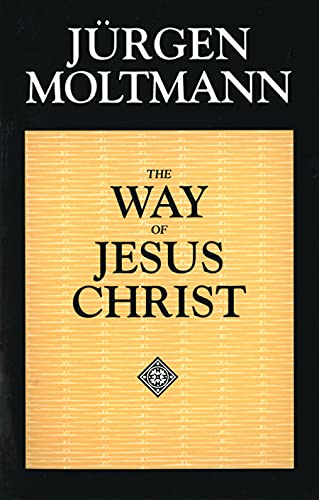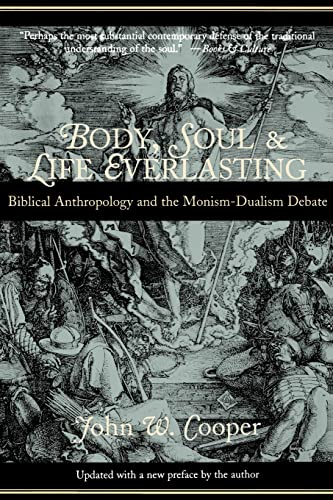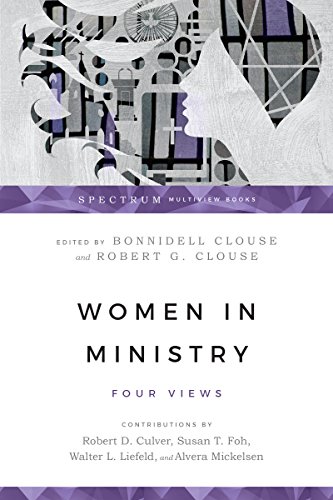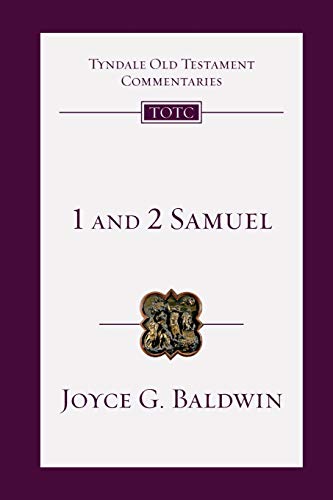J.E. Goldingay’s commentary on the book rightfully takes its place with the best of scholarly treatments of Daniel. Here is a commentary that reflects thorough scholarship, careful handling of the data of the text, independence of judgment, and impressive awareness of the mass of secondary literature (in a variety of languages) which exists for Daniel research.
Following the general format of the Word Biblical Commentary series (WBC), the main body of Goldingay’s commentary is organized around the following divisions for each section dealt with (usually a chapter of Daniel, though chapters 10–12 are dealt with as a single unit): (1) bibliography; (2) translation; (3) notes; (4) form/structure/setting; (5) comment; and (6) explanation. For the most part, this arrangement works fairly well. However, the distinction between ‘comment’ and ‘explanation’ is not always clear, and there is often a certain amount of overlap between the two. Whether a distinction here is really advantageous for the reader is debatable. For the purposes of this review I will organize my comments around these same divisions, although I will treat the final two together under the rubric ‘interpretation’.
- Bibliography. The collection of bibliographical data which Goldingay presents in this commentary is simply invaluable for anyone doing research on the book of Daniel. Here the extent of his preparation is impressive, and it is no exaggeration to say that the bibliographies alone for a serious student are worth the price of the book. In addition to introductory bibliographies dealing with the interpretation of Daniel (4+ pages), commentaries and other works on Daniel (c. 4 pages), and works cited by shortened references in the main part of the commentary (8+ pages), there are separate bibliographies for each of the sections in the commentary. The bibliography on Daniel 7 alone, for example, has more than 200 items. Granted, much of it deals with the ‘Son of Man’ literature in a context broader than Daniel studies per se, but as a study guide it is exceedingly helpful.
- Translation. Goldingay presents in the commentary his own translation of the Hebrew or Aramaic (2:4b–7:28) text of Daniel. For the most part the translations strike me as being accurate, fresh, and very readable. Particularly bold is his translation of 3:17: ‘If our God, whom we honour, exists …’ (contra rsv, ‘If it be so …’). However, the theological implications of this translation are nicely dealt with on p. 71 (but for a somewhat different approach, see P.W. Coxon, ‘Daniel iii 17: A Linguistic and Theological Problem’, VT 26 (1976, pp. 400–409).
- Notes. A collection of notes follows the translation of each section of Daniel. It is here that one looks for relevant philological and textual data supporting decisions made in the translation. Goldingay’s control of the materials here is outstanding. There are insightful grammatical discussions, careful sifting of textual variants, summaries of lexical research, etc. I particularly appreciated his thorough familiarity with the evidence of the ancient versions of the book of Daniel, including not only the Greek and the Latin, but also the Syriac. Such interest (to say nothing of competence!) is increasingly rare among biblical commentators nowadays.
- Form/structure/setting. Here one finds an evaluation of Danielic material in light of contemporary OT scholarship. The discussion of structure and setting generally provides helpful insight into these matters for each section of the commentary. From a form-critical point of view, Goldingay understands Daniel 1–6 as embodying elements of midrash, court-tale, legend, and aretalogy. This leads him to conclude that some of the material may be less than factual (see, e.g., pp. 6–8, 68, 75, 124, 126, 127). This for Goldingay is a matter of genre, and requires neither negative criticism against nor defence of the book of Daniel. He says, ‘To imply that they [the stories] are at fault if they contain unhistorical features is to judge them on alien criteria; to defend them by seeking to establish that at such points they are factual after all is to collude with such a false starting point’ (p. 321). But this may too easily dismiss the latent theological problems which the presence of inaccuracies in writings claiming divine origin poses for some interpreters.
So far as the visions of chapters 7–12 are concerned, Goldingay argues that we are dealing here with pseudonymous literature which is ‘quasi-prophecy’ (see e.g. pp. 267, 289, 304, 312, 315, 316–317, 321, 322, 332), or ‘quasi-prediction’ (see e.g. pp. 282, 283, 285, 293), or sometimes ‘situational midrash’ (see e.g. pp. 284–285). In an extended and creative paraphrase of the biblical text, Goldingay even has the scriptural writer himself admonish us to the effect that ‘it would be inappropriate to be literalistic in interpreting my visions, as if my message was other than a quasi-prophecy’ (p. 315, italics his). This perspective, of course, assumes a second– (rather than sixth- or fifth-) century date for the book. While a late date for the book is a consensus view of modern OT scholarship, it should be noted that a case can be made for an earlier date (see e.g. R.K. Harrison, Introduction to the Old Testament, pp. 1110–1127, or J.G. Baldwin, Daniel, pp. 35–46).
- Interpretation. In assuming a second-century date for the book, Goldingay understands the original audience to be mainly the suffering Jewish community of the Maccabean period. Under the guise of prophecy, the author of the book seeks to provide encouragement for those enduring the outrages of persecution under Antiochus Epiphanes. His purpose is not to predict the future; in fact, ‘the End of which he spoke did not come’ (p. 334), at least not in the sense he spoke of it.
Only selected specifics of Goldingay’s conclusions may be mentioned here in an attempt to represent briefly some of the more interesting or important of his conclusions. (1) According to the author, dates and numerical figures in the book of Daniel are not necessarily precise (see e.g. pp. 14–15, 45, 164, 179, 213, 239, 295). Goldingay believes that it is mistaken to think that biblical inspiration requires absolute accuracy in such matters (cf. p. 39). Those who subscribe to biblical inerrancy will no doubt take issue with ideas such as these. (2) Daniel’s seventy sevens are ‘not chronology but chronography’ (p. 257; cf. pp. 258, 266). According to Goldingay, we therefore should not expect an exact chronological outworking of the ‘weeks’. This conclusion goes counter to the common conservative view that this prophecy prefigures the coming of Jesus the Messiah. (3) The author of the book of Daniel engages at times in intentional ambiguity. We may err therefore in trying to know too precisely what he meant. Concerning the identity of the second and third kingdoms of Daniel 7, for example, Goldingay says that ‘Daniel is not really interested in the second and third kingdoms, and perhaps had no opinion regarding their identity’ (p. 176; cf. p. 178). This view, at least to the degree that he avers, is rather unlikely. (4) The identity of the fourth empire of chapters 2 and 7 of Daniel is, for Goldingay, Greece, not Rome, though he concedes that ‘it is possible to make out a plausible case for identifying Rome as the fourth animal’ (p. 187). The identification of Rome as the fourth empire is in fact the view advocated by most conservative evangelicals. (5) Although Daniel’s fourth animal is nondescript in the text, Goldingay makes a case for understanding it to be the elephant (see e.g. pp. 163, 186). This specificity is rather odd, given the principle of ambiguity maintained elsewhere in the commentary. (6) 11:36–39 refers to Antiochus, not Antichrist (nor Antiochus V nor Pompey and his associates) (p. 305). Those who date the book early and see genuine prediction involved usually take this section to have future significance (= Antichrist), concluding that there is a temporal gap (most probably) between verses 35 and 36. Goldingay rejects such a view. He does, however, see some sort of shift at verse 40, which he thinks ‘marks the transition from quasi-prediction based on historical facts to actual prediction based on Scripture and on the pattern of earlier events; this continues into 12:1–3’ (p. 305). (7) In dealing with the ‘much disputed’ resurrection passage in 12:2, the author says ‘we must avoid treating it as a piece of theological “teaching”: it is a vision or a flight of the imagination, not a “fully developed” belief in resurrection … his imaginative portrayal should not necessarily be taken as an attempt at literal prediction’ (pp. 306–307). However, this does not seem to me to do justice to the intent of these verses. (8) When Goldingay presents the author of Daniel as reflecting on his own visions (p. 219 et al.), his paraphrase is interesting, but various anachronisms appear, such as references to Jesus and NT Scripture (see e.g. pp. 222, 314, 318).
The production of the book is generally good, although for some reason the first quarter of the commentary has not received the same proof-reading care as the remainder of the book. In the first 75 pages there are numerous typos, affecting both English and Greek words (see especially p. 5).
Minor complaints aside, this is a helpful commentary from which I have learned much. As part of the WBC, its theological stance is broadly evangelical. It is not, however, representative of conservative evangelical scholarship in adopting a second-century date for the book, seeing it as a pseudonymous composition, and taking its prophetic content to be only quasi-prediction. With regard to the major interpretive issues for the book of Daniel, this commentary is more representative of a broader consensus of OT scholarship.
Richard A. Taylor
Department of Old Testament Studies, Dallas Theological Seminary







